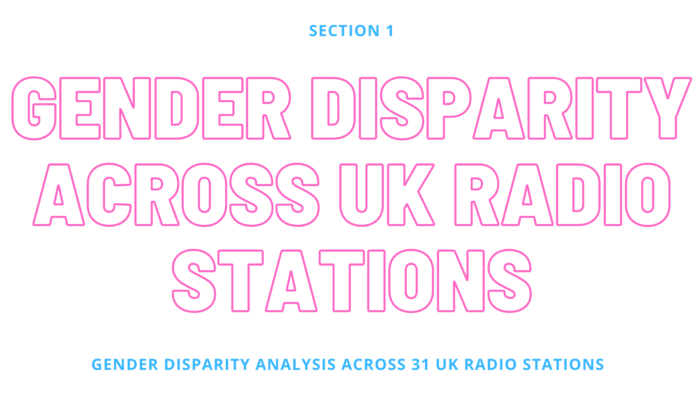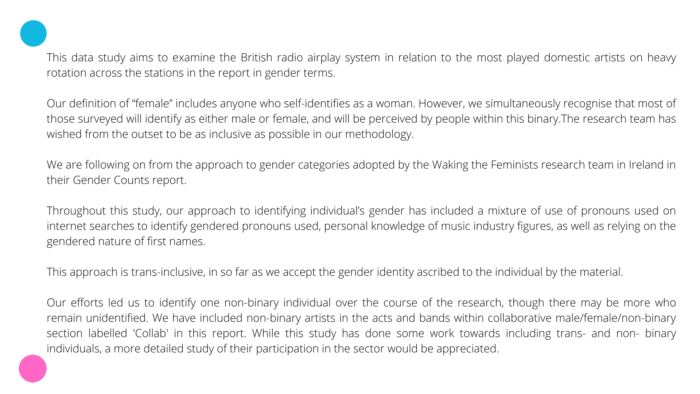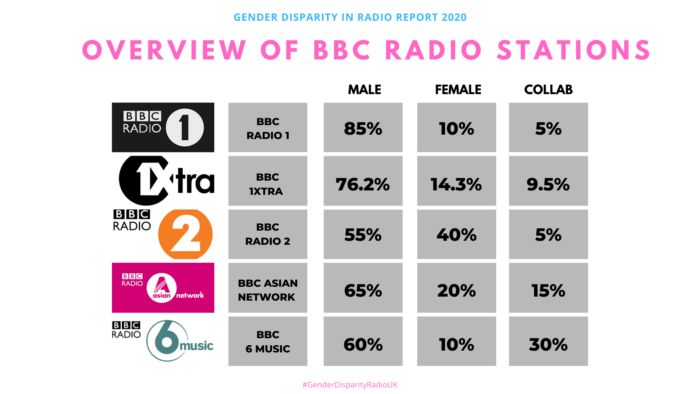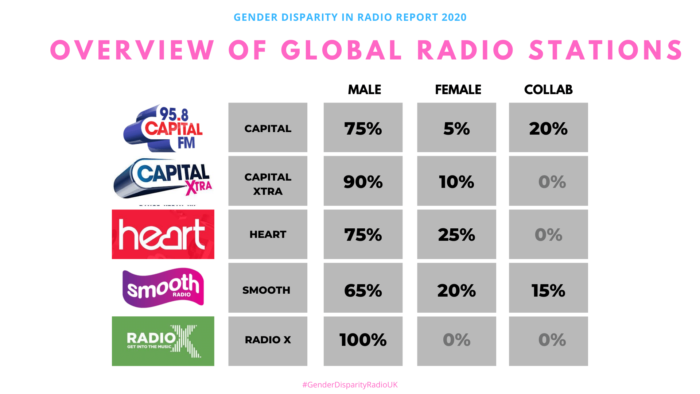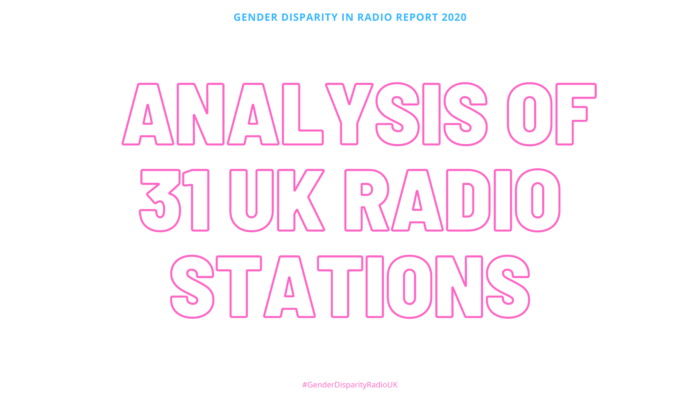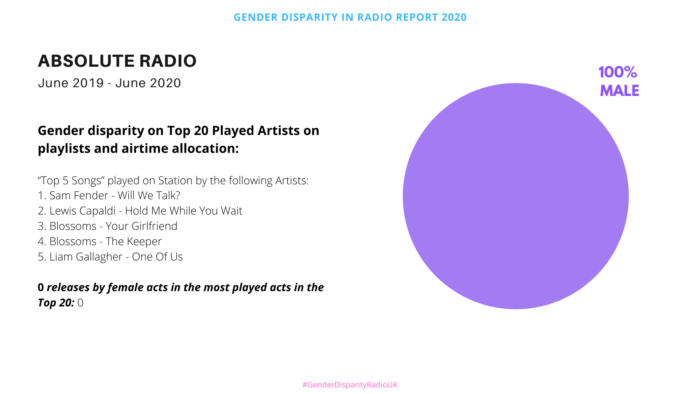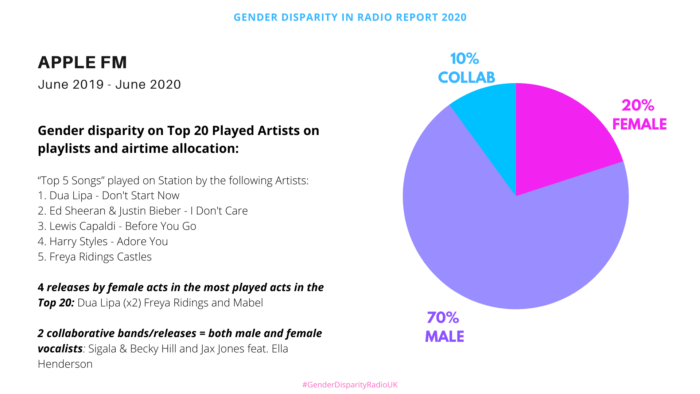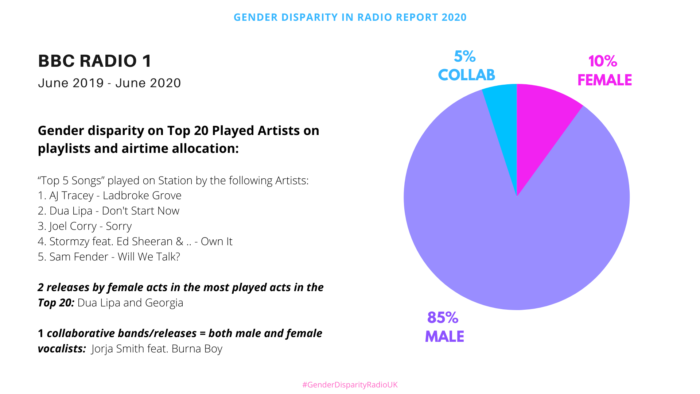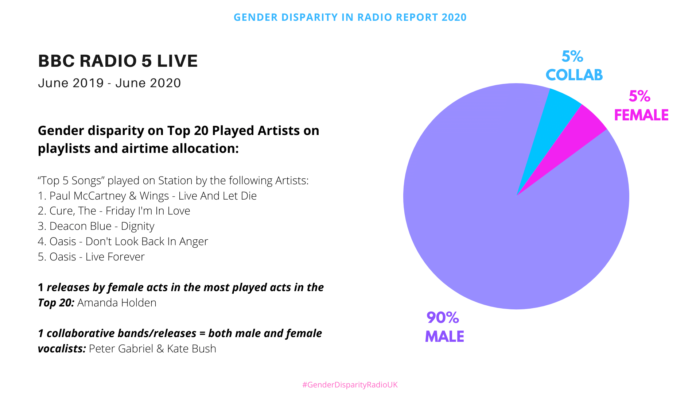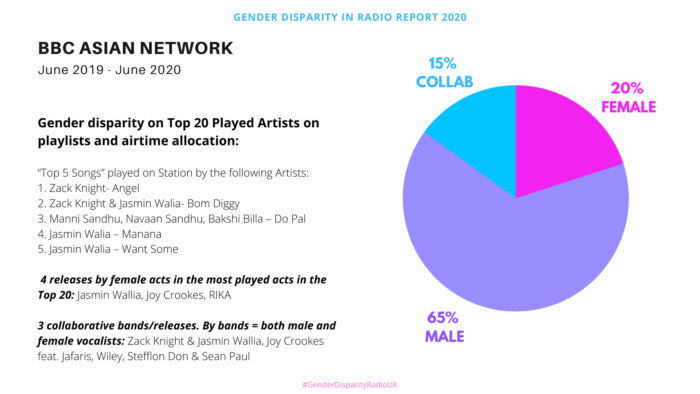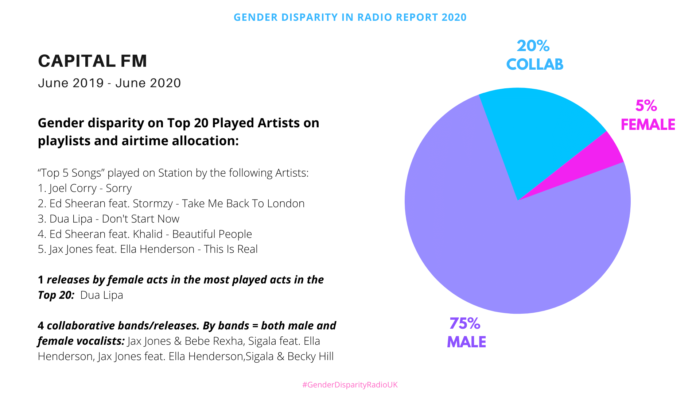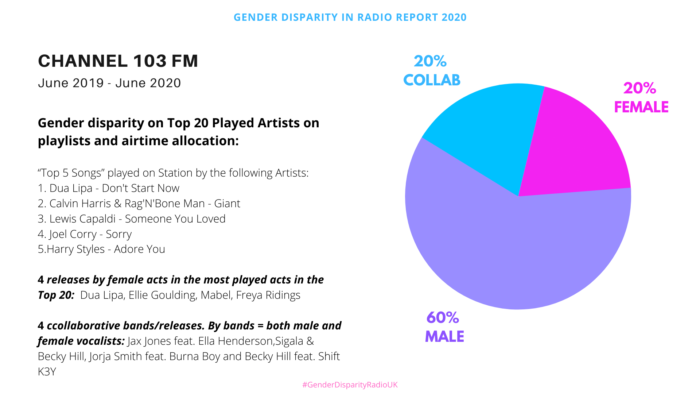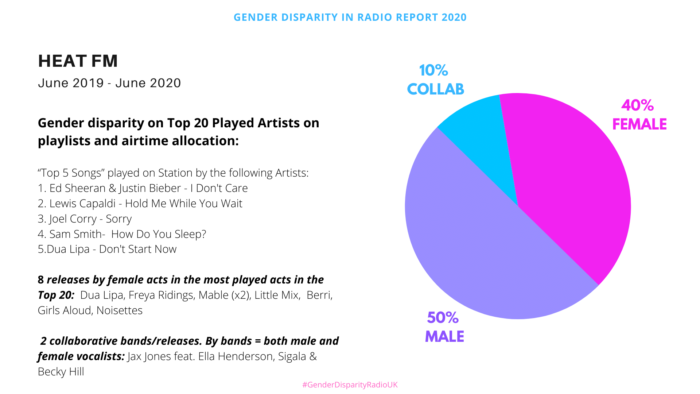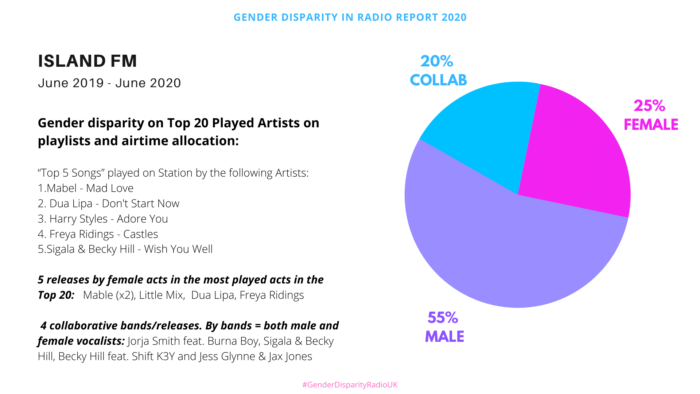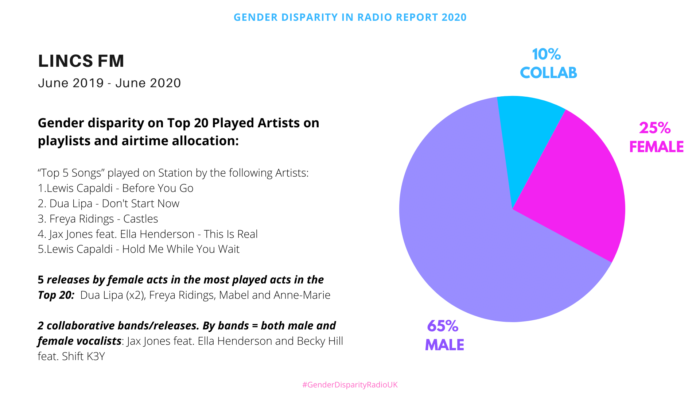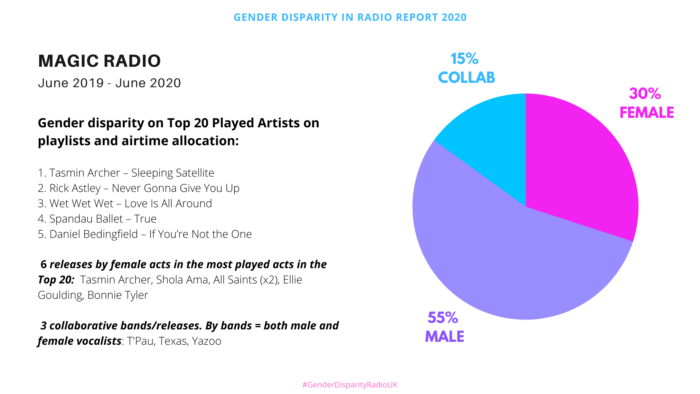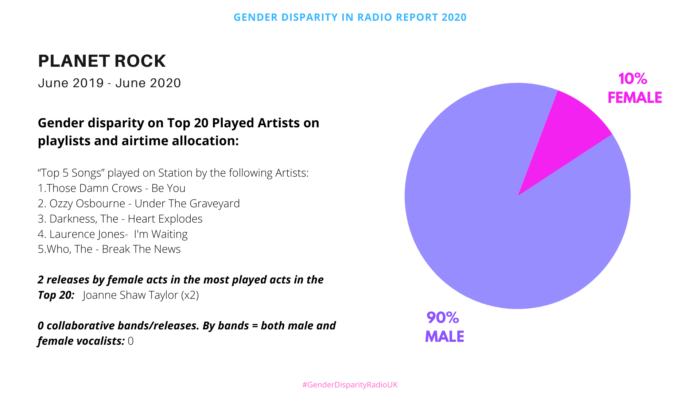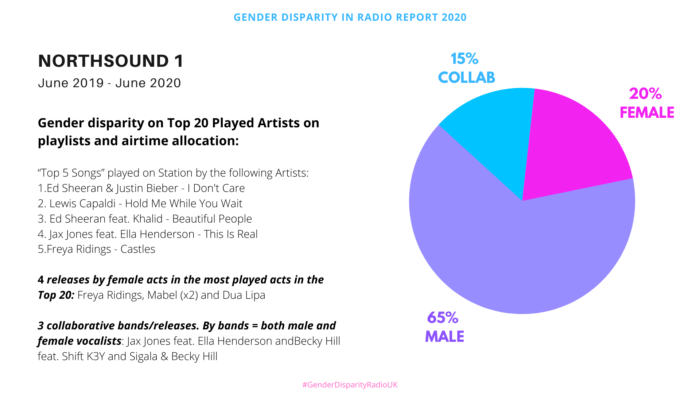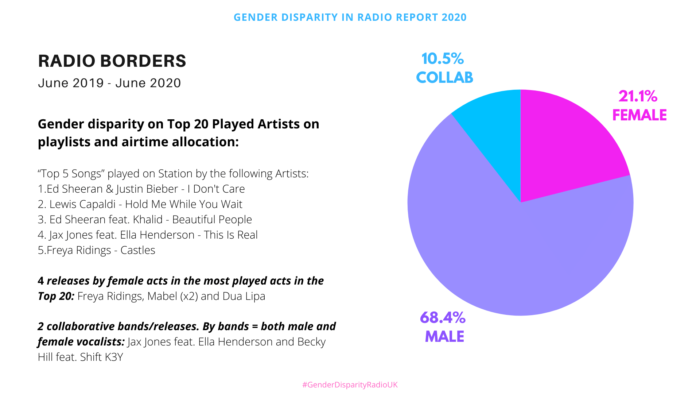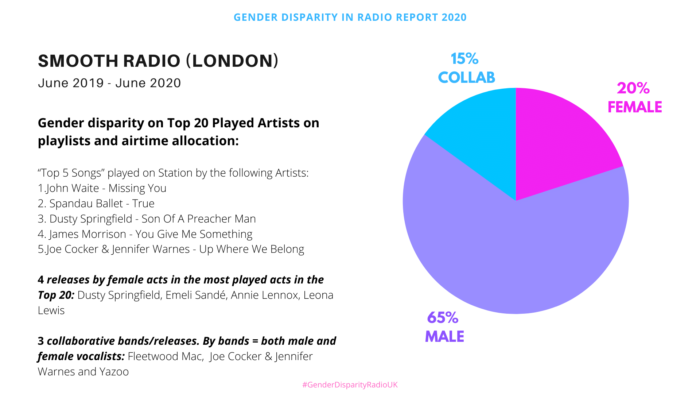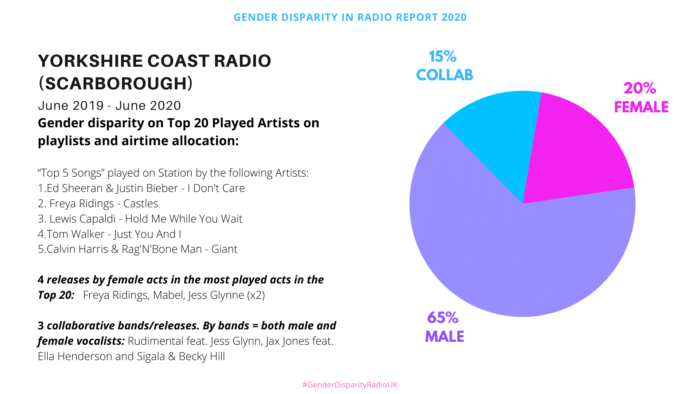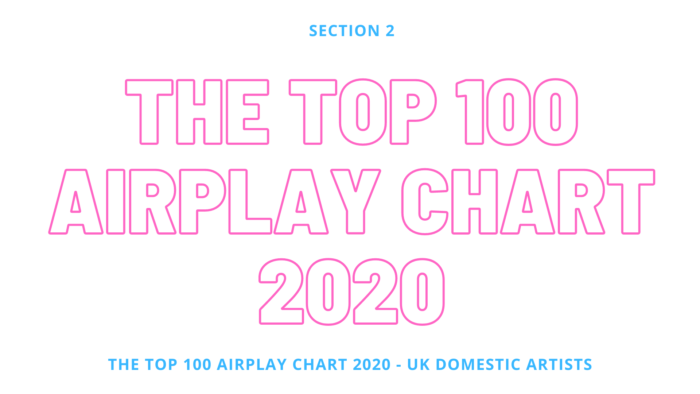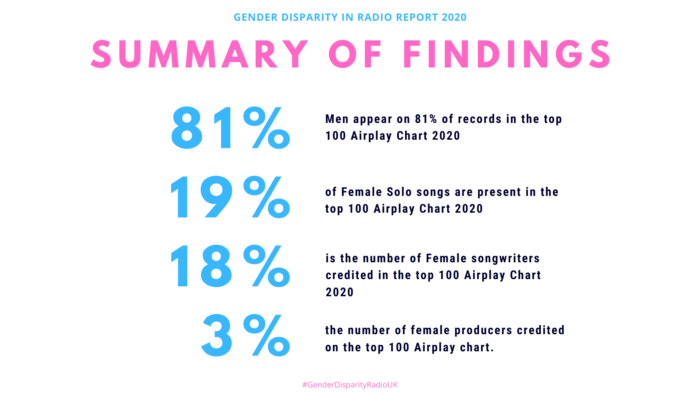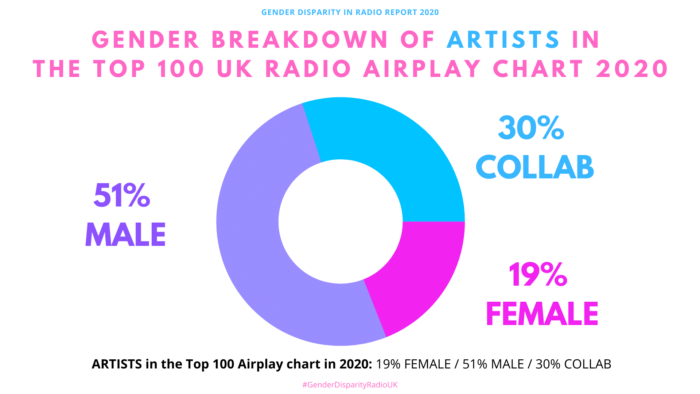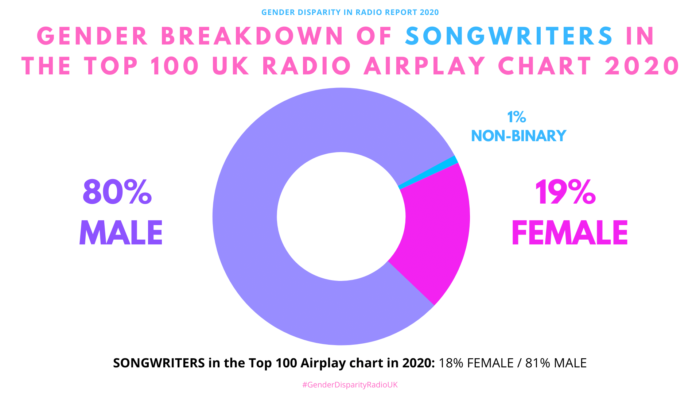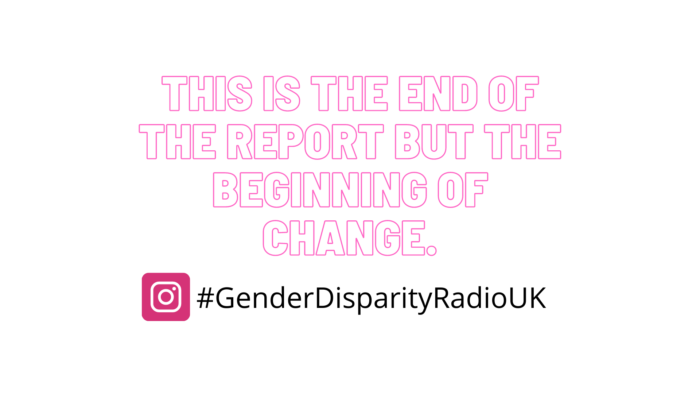This report looks at the gender disparity in UK Radio for British Domestic acts over 2 sections. The first section is an analysis of 31 individual radio stations, looking at the gender disparity present in the Top 20 most played songs by British artists, in Britain, over the period of June 1st 2019 to June 1st 2020. The 31 stations include the Top 10 and the most listened to National, Regional & Local radio stations including the major legacy radio stations and genre-specific stations in Britain. The 2nd part of the report is an analysis on the Top 100 Radio Airplay songs in 2020, from 01 Jan 2020 to 15 August 2020, in all radio stations combined, looking at the gender disparity for Female, Male and Collaborations.
This Report is based on British domestic only artists, and those whose songs are registered on Radiomonitor. Radiomonitor is the industry standard music airplay monitoring service used by Record labels, Management companies and PR companies in the music industry to evaluate the airtime allocated to artists/bands who have commercial releases in the British market, and whose music is issued to British radio seeking radio airplay. All the radio data in this report is taken from Radiomonitor.
In relation to this report, Radiomonitor will not always have 100% of what is released in the British music scene if it is not registered by a label, company or radio station, therefore some songs could be missing if not received by Radiomonitor. However artists like Joel Corry, Dua Lipa, Mabel or artists of a similar profile are always registered as a rule, as it is part of music industry practice to monitor plays of artists of this calibre. So with that said, this report can be looked upon as a reflection of the biggest commercial artists who are on the British Music Scene with music being released to radio and stands as a solid factual based data report on the airtime allocation across British radio for its homegrown domestic acts and bands across female and male acts showing the most played British artists across each station. Radiomonitor also provide comprehensive coverage for independent artists and labels.
For the purpose of gender disparity reporting, all songs have been categorised as either Female, Male or Collab.



